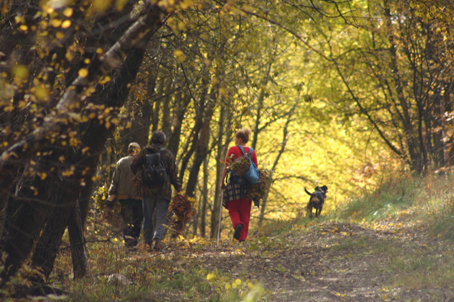

Foresters and forestry workers
Although attacks by bears on people are rare, foresters and forestry workers are among those most at risk, especially when in dense stands. If a bear feels threatened or has no escape route, it can attack in self-defence. This happens most often when a person encounters a bear at a distance of less than 20 metres. If you cannot see clearly in front and around you for a distance of at least 50 metres, for example in young stands, increase your vigilance. Before going on, make a noise (e.g. whistle, clap): this gives a bear the time and space to leave.
Be careful in obscure terrain, where there could be a bear den. If you hear sounds of a bear, or you see cubs, be very careful and leave the area quietly in the direction you came from.  Do not shout at a bear that is not aware of you: it could provoke an attack. Do not run from a bear: this can lead to pursuit.
Do not shout at a bear that is not aware of you: it could provoke an attack. Do not run from a bear: this can lead to pursuit.
In our opinion, it would be desirable for people working in the forest to carry pepper spray ("Bear spray"). During independent tests this was found to be more reliable than firearms. Using the spray creates a protective cloud between the person and the bear, which is more likely than a bullet to contact the bear.
If you are physically attacked and it is a defensive attack, lie on your belly, legs slightly apart, your hands joined behind your head, and play dead. This position will protect your face and neck; when the bear senses that you are no longer a threat it will usually leave. If you fight back against a bear or try to reach a gun or escape, there is a risk that you will provoke a more intensive, longer or repeated attack, during which you could be more seriously injured.
We recommend you watch the excellent film "Staying Safe in Bear Country". It not only contains useful advice but also wonderful footage and a wealth of information about bears.



